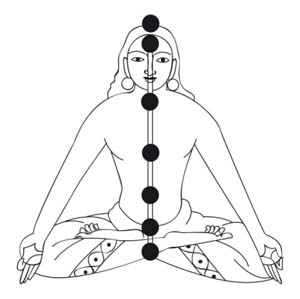Dec 19, 2025
Dec 19, 2025
 The basic teachings of all the six systems of ancient Indian Thought can be told in Swami Vivekananda's famous words, 'each soul is potentially divine; the goal is to manifest that divinity within, by controlling nature, external and internal'. Moreover, it is asserted in all the teachings, including esoteric Tantras, that whatever we want to attain in our life is contained within us. The infinite source of supply is within us; like the seed containing the future whole tree! Tantra teaches us one method as to how to put ourselves in touch with that eternal source by way of awakening of Kundalini Power. The system of Tantras is like the system of Yoga, but has had a tinge of mystery and secrecy about it.
The basic teachings of all the six systems of ancient Indian Thought can be told in Swami Vivekananda's famous words, 'each soul is potentially divine; the goal is to manifest that divinity within, by controlling nature, external and internal'. Moreover, it is asserted in all the teachings, including esoteric Tantras, that whatever we want to attain in our life is contained within us. The infinite source of supply is within us; like the seed containing the future whole tree! Tantra teaches us one method as to how to put ourselves in touch with that eternal source by way of awakening of Kundalini Power. The system of Tantras is like the system of Yoga, but has had a tinge of mystery and secrecy about it.
Kundalini Power
This potentiality of perfection is present within every man and woman in the form of very subtle germ or seed. The seers of the Tantras used the metaphor of 'Kundalini'; the 'coiled one' like the sleeping/dormant serpent that is inactive but not dead! With mediation and instructions from a spiritual Teacher it is possible to activate this latent energy into powerful force that is sure to transcend the limitations of the human mind and to establish the sadhaka in the altered state of higher consciousness.
Where does this spiritual power reside in our body? According to the Tantra, it lies hidden as the dormant energy at the base of the spine. But it has potentiality to wake up and rise through the channels upwards towards the brain. These channels are known as nadis and are three in number. The left is Ida, the right one is Pingala, and the central one is Sushumna. The right and the left join the central one at the base root of the spine, and they cross each other at the level of neck. In most of the persons, at the usual level of human or animal consciousness, the energy currents pass through these two channels, the Ida and the Pingala. As Sushumna remains blocked by dormant residue of energy, like debris obstructing a conduit, our higher or spiritual consciousness remains non-manifest.
 For the manifestation of higher consciousness the latent potential energy must rise through the central pathway ofSushumna. On this path are situated seven chakras or energy centers, metaphorically called Lotus Symbols. The lowest chakra is at the base of the spine and is called as Muladhara. The second one at the level of genitals is calledSwadhisthana. The third, at the level of navel, is known as Manipura. The fourth at the level of heart is called Anahata, and fifth at the level of throat is Vishuddha. The sixth in between two eyebrows isAjna, and the highest at the level of top of the skull is Sahasrara. (Please see the picture)
For the manifestation of higher consciousness the latent potential energy must rise through the central pathway ofSushumna. On this path are situated seven chakras or energy centers, metaphorically called Lotus Symbols. The lowest chakra is at the base of the spine and is called as Muladhara. The second one at the level of genitals is calledSwadhisthana. The third, at the level of navel, is known as Manipura. The fourth at the level of heart is called Anahata, and fifth at the level of throat is Vishuddha. The sixth in between two eyebrows isAjna, and the highest at the level of top of the skull is Sahasrara. (Please see the picture)
Each symbol represents a level of consciousness, they are symbolic in nature, and no dissection of the spine or the brain would ever reveal them! As the kundalini awakens and rises through the central channel, these chakras bloom one by one with manifestation of higher and higher level of consciousness. Essential union with Self, or God, or Shiva is achieved when the kundalini rises to the highest chakra, theSahasrara.
The Meaning of Chakras
The chakras represent definite meaning. For instance, Muladhara is the storehouse of all the past impressions, samskaras, while activation of Swadhisthana leads to awakening of passions, including sexual desires. When the consciousness is at the level of Manipura chakra, the sadhaka enjoys all the wealth, name, fame, material comforts and luxuries of the world. In most of us our consciousness dwells in any one of these chakras. Thus love and hate, anger and lust, depression and elation, craving for worldly gains and comforts is all that what we desire.
Only when the kundalini awakens and reaches to the level of heart chakra AnahataLotus then some spiritual dimension is added to our consciousness.
Meditation on the Chakras
Sit on the regular meditation seat, in posture, which keeps the back and neck straight. Breathe regularly or adopt Pranayama breathing exercises if you know them. Try to visualize a luminous channel running all the way from the base of the spine to the brain centers - Sushumna. Feel by the power of breathing and thought the passage at the bottom of this channel has cleared and a constant stream of spiritual energy is running into it from U shaped conduit, formed by the junction ofIda, Pingala, and central Sushumna.
This inrush of energy current awakens kundalini, which has taken the form of a small, white lucid, but soft and soothing light, like the flame of a candle. This light is slowly traveling upwards through the channel of the Sushumna.
1) It touches and illumines the first center, Muladhara, symbolized by a lotus located at the base of the spine. As the light touches this center, the drooping lotus bud straightens up and opens, showing beautiful four petals in brilliant red. The disc inside is also of same color.
If one can get control over this center, the person will be able to remember everything concerning his previous lives
2) Next visualize the light of kundalini touching the second center, Swadhisthana, opening it into six-petalled vermilion lotus.
This center is the fountainhead of all our animal forces, which can be spiritualized and used for our best advantage by gaining absolute control over this center.
3) Visualize, concentrate, meditate, think, or imagine similarly as you go higher up to the third and subsequent centers. Manipura is ten-petalled lotus symbol with scarlet color.
Manipura means city of jewels, and control over this center marks the climax of all material enjoyment, power, name, fame, health, and physical beauty, and prosperity.
4) Anahata at the level of the heart has twelve petals and it is brilliant blue in color.
Anahata means the uncaused or the non-agitated. With the unfolding of higher consciousness at this level, the person becomes highly spiritual. He carries message of love, friendship, help, and forgiveness, peace in short.
5) Vishuddha has sixteen petals, and is light grey in color.
Vishuddha means very pure. Consciousness at this level brings into manifestation in the personality of the yogi pure beauty, pure goodness, and pure truth. The person becomes exceptionally gifted in art and he becomes an artist of the highest order.
6) Ajna between the eyebrows has two petals of snow-white hue.
Ajna, which means the 'all-knowing', is the stage when the yogi unfolds absolute knowledge. There is nothing in this or any other universe, which he/she does not know. There is infinite understanding and wisdom.
7) The thousand-petalled sahasrara center is the symbol of transcendent state. When the light of kundalini reaches there, one sees ocean of light, brilliant and effulgent, but cool, soothing and peaceful. The finite light of kundalini merges with the infinite Consciousness, like drop in the ocean.
In the final state, of reaching the thousand-petalled lotus, sahasrara, that little distinction between our limited ego and the cosmic ego is lost, and the sadhaka reaches the highest transcendent state of samadhi. He/ she becomes one with Brahman.
Caution: This practice may be full of adverse reactions, if done without the guidance of the Guru.
(Adapted from "Meditation", By Monks of Ramakrishna Order, Sri Ramakrishna Math, Chennai, India, Publication. For further details please refer to this small book.)
08-Feb-2001
More by : Dr. C.S. Shah

|
this is true but it can be prectice regularly basis. |